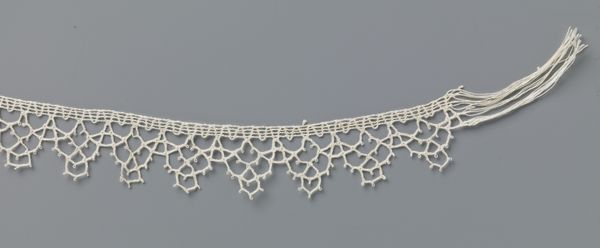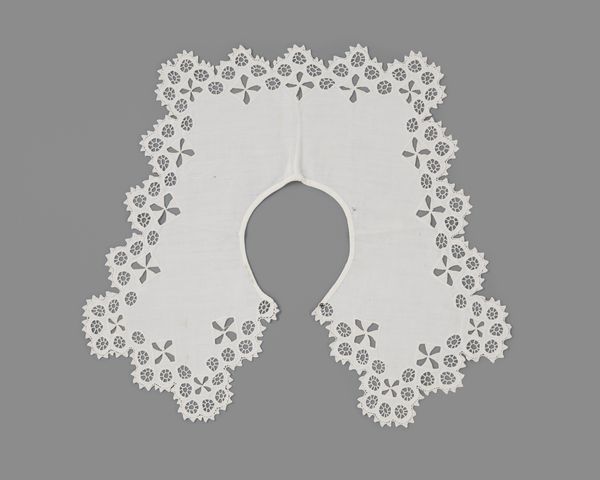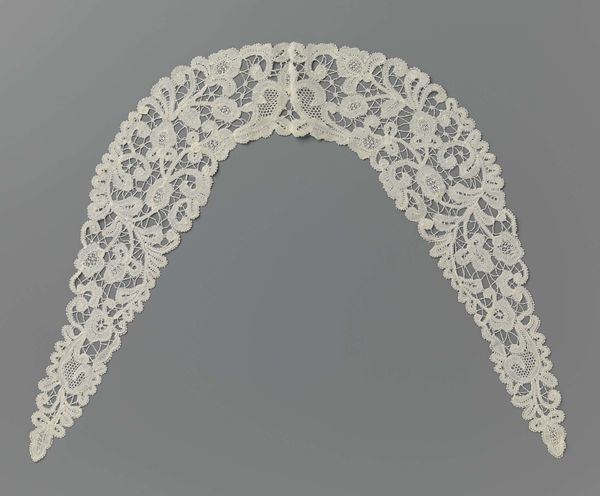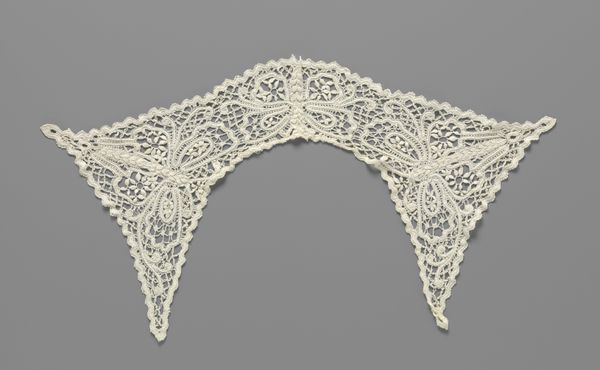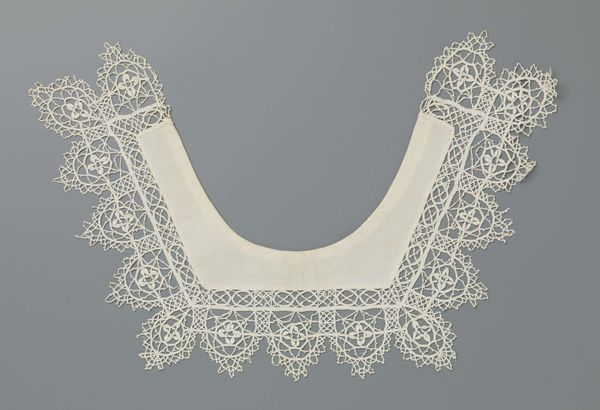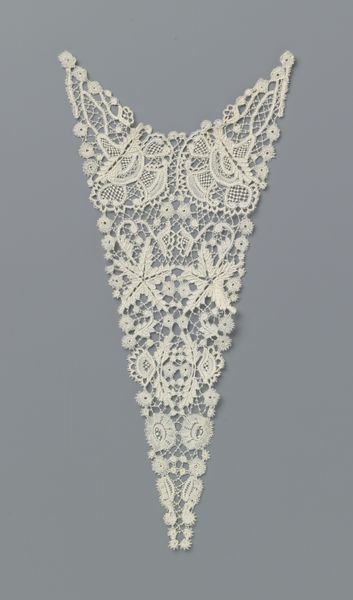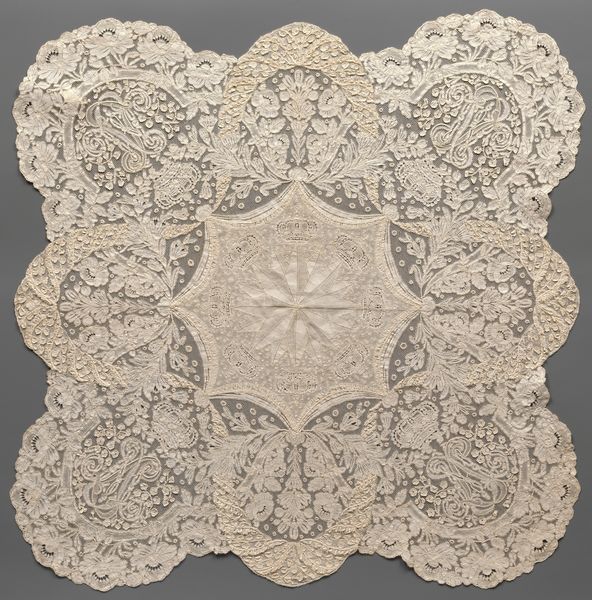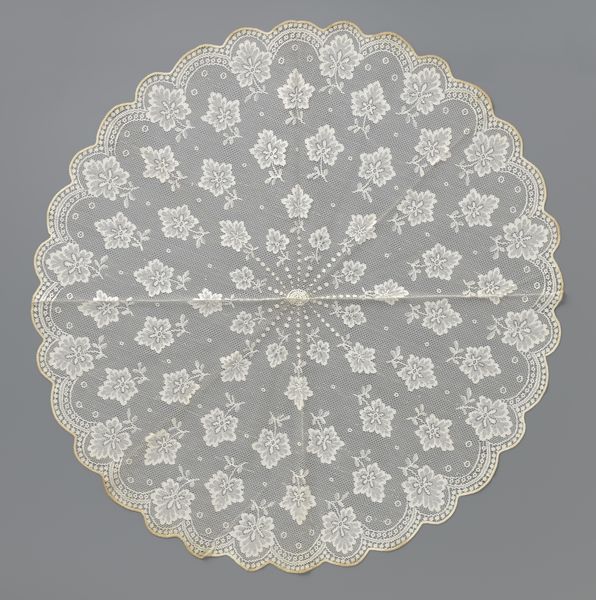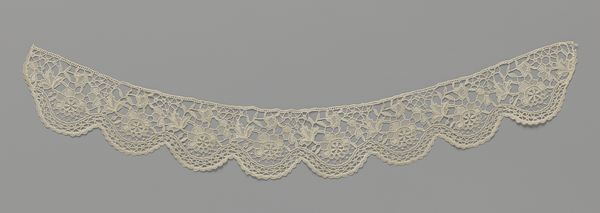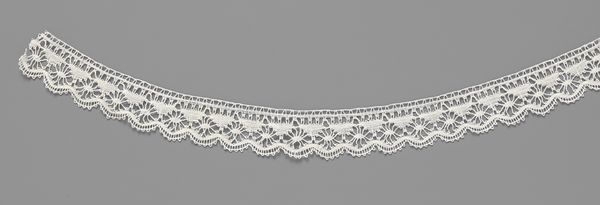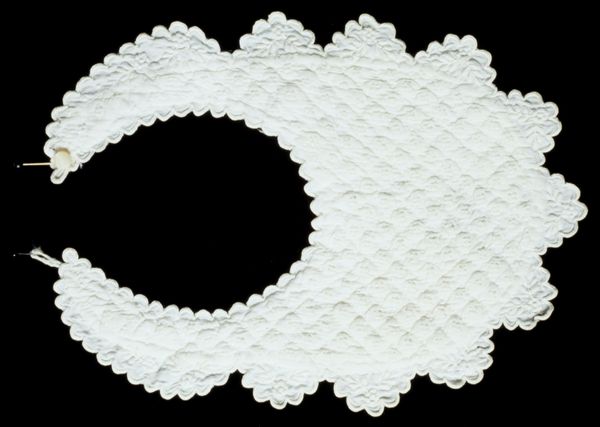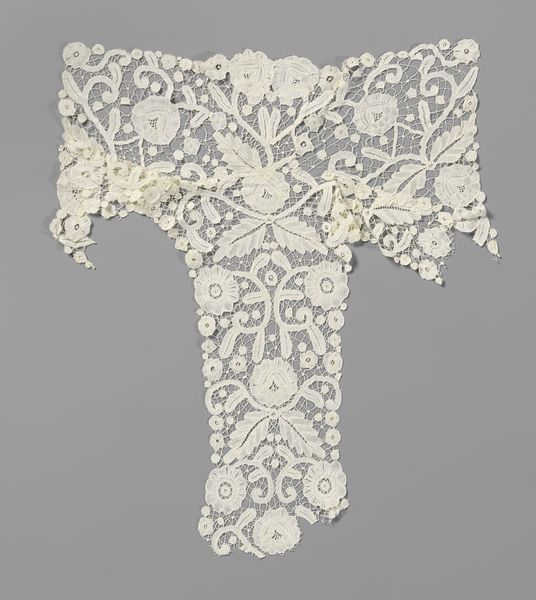
weaving, textile
natural stone pattern
weaving
textile
pattern background
pattern design
repetitive shape and pattern
fabric design
repetition of pattern
regular pattern
pattern repetition
decorative-art
layered pattern
combined pattern
Dimensions: height 35 cm, width 14 cm, width 12.5 cm
Copyright: Rijks Museum: Open Domain
Editor: Here we have "Jongenskraag van gehaakte kant met reliëf rozen als schulpenrand," or Boy's collar of crocheted lace with relief roses as shell edge, created sometime between 1910 and 1920 by W. de Jong. It’s delicate, and clearly demonstrates hours of intricate work. What stories do you see woven into this piece? Curator: This collar, beautiful as it is, invites us to consider the labor and social context of its creation. Who made this? Women, most likely, whose "domestic arts" were often undervalued labor. How does the meticulous detail speak to the constraints placed upon them, and conversely, to their creative resistance? Editor: Creative resistance? In a collar? Curator: Absolutely. Crochet, while seemingly a docile pastime, was a way for women to contribute economically, gain autonomy, and even communicate subtle messages through symbols. The floral motifs, repeated so carefully, could represent coded desires or shared cultural knowledge. We must also question for whom it was made and worn – presumably for a young boy to display status and class. Editor: That's fascinating; I hadn’t considered the potential for hidden narratives within something so seemingly straightforward. Was this common? Curator: It was. Consider the limitations placed on women's expression during this period. Needlework offered a sanctioned space for creativity. Examining such crafts challenges the traditional art historical canon, allowing us to center marginalized voices. How do you feel about reclaiming these histories? Editor: I feel like I need to rethink everything I thought I knew about art history. This collar, which seemed merely decorative, suddenly has layers of meaning. Curator: Exactly! By interrogating the seemingly mundane, we unearth rich socio-political narratives, recognizing the agency and artistry often dismissed within women's craft. This piece isn’t just lace; it is a testament to the resilience of human expression in the face of societal limitations. Editor: I’ll never look at lace the same way again.
Comments
No comments
Be the first to comment and join the conversation on the ultimate creative platform.
